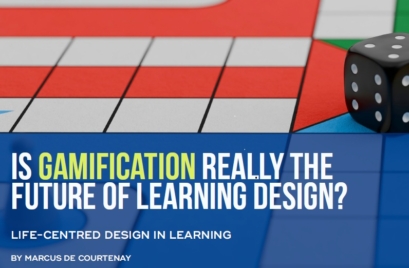
We are in the second of the two great work transitions brought on by the pandemic. The first: a mass movement to work from home. The second: a negotiated return to an elusive hybrid work balance.
One thing is clear – for many organisations, there’s no going back to wholly in person. Team members, and the market, see it as a largely outdated and inflexible option. However, where we should be situating our ways of working within the available spectrum, from completely in-person to completely remote, is far from clear.
This uncertainty is best illustrated by the difference in opinion by two scions of big tech: Google and Apple. Google has indicated an acceptance of almost complete flexibility including 100% remote going forward. While Tim Cook, on the other hand, was an early advocate for the graded return to work at Apple, keen to regain the creative energy of in-person collaboration.
A lot of our clients are asking us how to best approach this hybrid future. Undoubtedly, a cursory google of the topic will return numerous tips around setting up our meetings to be as smooth, organic, and inclusive as possible. However, are there deeper questions we need to be grappling with when it comes to leading hybrid teams and organisations?
What do teams need to thrive and perform optimally in hybrid environments? What do leaders need to be thinking about to facilitate this transition? One way to conceptualise this is through a simple equation:
Optimal Hybrid Performance = Hybrid Means + Hybrid Environment + Hybrid Needs
Let’s take a look at each of these components:
Hybrid as a Means
It’s important to see hybrid working not as an end-in-itself. Rather, our hybrid working arrangements are aimed at securing certain work and team outcomes, just with the advantage of greater flexibility. If we start with this mindset, we can take stock of the types of hybrid work we are doing, what we want to gain from this work, and how this can be optimally achieved. For example, we can think about how we are connecting as a team through categorising our work into the activities of coordinating, cooperating, and collaborating. This way of seeing organisational behaviours has been a key schema in management research for many years.
We can understand coordinating as the communicating of common goals between team members. Cooperating means working together (either directly or indirectly) to deliver on these common goals, whilst collaborating is the dynamic and integrated process of working together to create new ideas, possibilities, and innovative outcomes.
So, the question becomes less about how we can achieve a perfect hybrid meeting every day, but rather what are we trying to achieve in this particular meeting or touchpoint? If we are simply coordinating, it might not require significant use of media or discussion (or even a meeting at all!). As a leader, you might be virtually coordinating all the time through various channels. However, if we are collaborating on a piece of work, equal participation, creative brainstorming, and flowing conversation might all be an essential part of our time together.
In addition to these types of shared work, we might also want to prioritise time for social cohesion and capital building. This poses a different set of environmental and personal needs. On the other hand, individual focus time calls for space and the opportunity for sustained attention to a challenge, which might be best achieved at home or in a personal workspace.
We want to be thinking deeply about each of the types of work we are doing and what is being asked of the situation. Over time, as well, the hybrid shift will have a feedback effect on our cultures, which will naturally evolve. Exploring these developments with an open and curious mind, will support the change.
Making hybrid your own:
- What types of work does our team need to complete? What optimises and energies this work?
- What medium or ways of working is best suited to each of our different types of work?
- How does this medium support, hinder, or supercharge that work?
- How might we need to evolve our culture and ways of working for the hybrid space, rather than simply mapping the hybrid environment onto our existing ways of working?
Hybrid as an Environment
As an environment, hybrid working then depends on what we want to achieve. It may be the case that the usual communication techniques of email or instant messaging are sufficient for many of the ways in which we need to connect during the day.
However, if we are trying to move into that deep collaboration space, then we might work towards having everyone in person on one or two occasions in the month, or even the year. If hybrid is the only option, then we might be very conscious about how we design our time together around:
- Optimising technology – We know that poor video and audio quality can make us rate speakers as less intelligent and less likeable. Getting things operating smoothly and clearly is a foundational part of a successful hybrid workspace. Using electronic brainstorming tools can also be fantastic for increasing the productivity of virtual meetings, as team members are able to generate ideas simultaneously. Prioritising and optimising this aspect of our daily work practice sends the right message – “I want to see and hear you.”
- Maximising the remote experience – As much as possible, our thoughts need to turn to what virtual participants are seeing, hearing, and thinking, as we try to make their experience as natural and rich as possible. For example, this might be about trying to get full-size images of participants and positioning virtual participants so that they can see speakers face-to-face. There is nothing more disconcerting than disembodied and muffled voices floating through the speakers.
- Establishing checkpoints for equality – We can adopt several techniques to ensure that the remote experience is going well during sessions. For example, we can appoint an in-room avatar for remote participants to advocate or support them and allow for check-in points throughout.
- Harnessing the power of side conversations – When it comes to creative thinking and problem solving, the best results come from the combination of equal participation/contribution and utilising break-out rooms to build small group consensus. Try to focus on inclusivity and breaking up plenary sessions into smaller ones when there is time.
- Reducing fatigue – Zoom and Teams fatigue is a very real phenomenon, and we are beginning to understand where the cognitive load is concentrated. Reduce fatigue by advising teams to turn off self-camera and gallery mode where possible, as they can cause us to be drained by continual partial attention and self-monitoring.
Facilitating the hybrid environment:
- How should we be constructing our hybrid environment for our work?
- What roles do we need to play for a thriving hybrid conversation? Who is the facilitator leading the conversation? Who is advocating in-the-room for those who are online?
- How are we keeping track of the meeting dynamics in real time to ensure that the conversation is inclusive, and all voices are being heard?
Hybrid and our Needs
The other part of the hybrid equation is the social needs of our teams. Again, these will vary depending on the outcome we want from our interactions. For example, in a one-on-one catch up our ability to express empathy or provide clarity to a team member around a complex situation are more important than in a daily briefing email.
Research has shown that we have certain needs that, when met, give us a sense of motivation and fulfilment. The needs that are particularly relevant when thinking about hybrid work are:
Significance
Significance speaks to our sense of self-esteem and worth. Perceived threats to our sense of significance in a social or professional situation are often met with negative emotions and behavioural reactions. What can happen in hybrid environments is those team members who are close or available (such as in-person) are more likely to be called upon when making decisions or seeking collaboration or assistance. This might not be motivated by any other desire than trying to get things done quickly. The outcome, however, can be a sense of loss of significance by those not included or called upon for their views or expertise because they are remote in time (working asynchronously) or space (working remotely).
Certainty
Certainty is about us feeling secure in our ability to apprehend and predict the future. With more sporadic information sharing in the hybrid space, “behind the scenes” conversations and the fact that tacit understanding is more likely to be conveyed in person versus online, certainty needs to be a focus. Over time, these factors can lead to a loss of certainty or unclear expectations about the direction, work, or relationships within a team.
We know that one of the major contributors to Zoom fatigue is loss of experience and interpretative data. The effort required to piece together what we do receive and “read the (virtual) room” takes a toll over time. In a similar vein, media richness theory argues that we receive more information depending on the richness of the media. For example, in-person tells us more than a phone call, which in turn tells us more than an email. Highly rich media are ideal for discussing complex topics where the most information is available for participants. Conversely, a lack of richness can lead to uncertainty and unclear expectations.
Connection
With the reduction of “in-person” time for building relationships and connecting with peers, there is a risk of disconnect across our teams. This is closely related to the idea of trust which underpins a whole range of essential aspects of team dynamics and cohesion. Being mindful about cultivating a sense of deeper connection in the hybrid space has to be a key priority for leaders.
Belonging
One of the big risks that has the potential to play out in a hybrid work environment is polarisation through in-group bias. Stemming from our tribal past, we tend to prefer those who we see as being in a similar circumstance or grouping as us. This can mean that we congregate into informal ‘coalitions’ between those who are in-person and those who are working remotely. With time and often unconsciously, the ramifications of this can be the out-group experiencing a sense of loss of belonging.
Autonomy
Flexibility and autonomy are not the same thing. People are seeking flexibility as a vehicle for autonomy. They want the autonomy to be able to complete their work in a way which accommodates both their employer and other valuable aspects of their life, whether that’s family or interests and passions. If team members feel that their way of working is highly controlled or dictated (e.g., high levels of remote monitoring), having “flexible” options are unlikely to translate into a sense of autonomy. The focus in hybrid work should be on maximising the autonomy of team members and what that might mean for each person in their own flexible work arrangements.
Fairness
Finally, we need to be thinking about the ever-important human desire for fairness. We want to feel that we are each on a level playing field regardless of the way in which we are working. Relevantly, proximity bias can be a factor when it comes to how we are interacting with team members in person versus online. We often find ourselves preferencing people and objects which are proximate to us in time and space. This is instinctive as, once upon a time, that’s all we had to achieve our ends. Of course, things have changed. However, there is evidence from studies conducted on work-from-home arrangements that remote workers, despite having higher productivity, are less likely to receive promotions.
Serving the needs of the team:
- How are my team’s needs being met in this conversation, meeting or way of working?
- What changes do we need to make to our ways of working to better meet our needs?
- Are there small things we can do to build connection, belonging, inclusivity etc.?
- How are our hybrid ways of working impacting on the sense of significance, certainty or autonomy experienced by the team?
Hybrid for You
However we organise in hybrid environments, we are making trade-offs. No organisation has yet found a utopian hybrid arrangement, and given the complexity of the challenge, it is unlikely that a utopia exists. The important things for us to be aware of is the trade-offs we are making, so that we can best balance these over time for our specific team and context.
As we make these decisions, we need to keep two priorities front of mind though:
Maintaining and building trust is critically important. First, it’s critical for successful interactions and second, it’s hard to build. So, once it is gone, it is hard to get back. In fact, trust has a disproportionately higher impact on the performance of virtual teams in comparison to face-to-face teams. The loss of trust impacts on everything from productivity to creativity. By building a strong sense of trust, your team will have the underlying capabilities for holding inclusive discussions and connecting, despite the extra steps required in hybrid working. In a hybrid meeting, this might mean reaching out to someone who is yet to give their ideas on a topic. In the long run, this means a one-group mentality rather than an in-group mentality.
Awareness of access and inclusion must be constant. We must be highly attuned to the often unseen element in how individual team members are accessing and participating in the hybrid environments, and how their primary needs are being met or not met. We should be promoting, talking about, and addressing a sense of equal treatment and involvement of all team members, regardless of the locations from which they are working. Keeping up open and transparent communication across the team will support in ensuring a sense of consistent treatment.
As leaders we will be operating in a range of different spaces in the hybrid future, which will require slightly different emphases in approach. If we start from the basics though, thinking about what the team wants to achieve and what it needs to achieve it, we will have a solid foundation for experimenting and finding what works well for our teams.
Need More Help?
Keen to find out more about how your organisation can best operate in a hybrid future? Performance Frontiers are experts in helping guide leaders to cultivate a range of creative and strategic practices within their teams to facilitate these work transitions with an expansive mindset. Speak to Chris about how we can partner with you today to transform and thrive.
While every effort has been made to provide valuable, useful information in this publication, this organisation and any related suppliers or associated companies accept no responsibility or any form of liability from reliance upon or use of its contents. Any suggestions should be considered carefully within your own particular circumstances, as they are intended as general information only.








